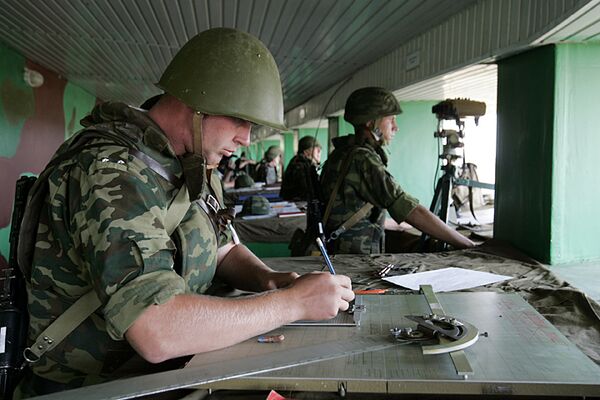MOSCOW. (RIA Novosti military commentator Ilya Kramnik) - On Monday, Russian Prime Minister Vladimir Putin chaired a special meeting in Voronezh, southern Russia, to review the procurement of modern weapons for the Russian Armed Forces.
The meeting focused on the delivery of state of the art automated troop-control systems.
Telecommunications and automated control systems remain a weak spot in the Russian Armed Forces, which still rely on obsolete Soviet-era systems. In 2000, the Voronezh-based Sozvezdiye Company became the lead contractor in the development of new tactical-level control systems.
Although military units have already received the first systems, some sources claim they are unreliable and difficult to operate. However, these initial drawbacks may be eliminated in the future.
The current financing for new-systems purchases makes it impossible to re-equip more than one brigade a year out of the 80-plus operational Army brigades. This is unacceptable.
It is hard to overestimate the role played by modern electronic systems in combat operations, especially today when virtually all industrialized nations, including Russia, are working hard to develop network based warfare, now commonly called network-centric operations, a new military doctrine or theory of war.
The new doctrine calls for creating a combined control system facilitating online target acquisition, information exchange, target allocation and command communication. The proposed system would also monitor the state of military units and their equipment.
Such control systems reduce the time needed to issue orders, including those for individual soldiers, ten-fold and provide a considerable advantage against enemy forces lacking such equipment. This is a vital pre-condition of modern warfare.
Russia lags behind other countries in the development of such equipment. This may create a permanent and even aggravated gap in terms of equipment levels compared with the armed forces of leading NATO countries and some other states.
Russia started developing automated troop-control systems in the 1980s when the Manyovr (Maneuver) control system was tested and won acclaim from the military and the defense industry.
However, the break-up of the Soviet Union and subsequent developments made it impossible to complete this project which had to be resumed from scratch in the early 2000s.
Although the government realizes the importance of this problem, the development of new troop-control systems has not been duly managed and coordinated to date.
Vladimir Putin said in Voronezh that a general designer responsible for developing automated control systems had not yet been appointed, and that an integrated agency to chart and implement a joint science-and-technical policy in this area had not thus far been established. In addition, a comprehensive program making it possible to concentrate resources, to coordinate budgetary spending and to make it more cost-effective was lacking.
Consequently, the Armed Forces' organizational changes are not facilitated by modern equipment. This could impair the effective troop control of the new units and their combat efficiency.
The problem-ridden development of new control systems points to an all-out crisis that has plagued the Russian defense industry for the past 20 years.
Hi-tech sectors requiring the coordinated work of dozens or even hundreds of companies and considerable investment are the hardest hit.
Apart from control systems, the Armed Forces are also having trouble developing and testing the Bulava submarine-launched ballistic missile, building new diesel-electric submarines, creating air-defense systems, the Global Navigation Satellite System (GLONASS) and other types of military equipment.
It is still unclear how this crisis will be overcome, and standard financial-support measures are not enough. The state which wants to enhance the combat capability of its Armed Forces must oversee the invention of key defensive systems and intervene more actively in those cases when existing managerial bodies are either incompetent or reluctant to accomplish their objectives. Otherwise the lag may pass a critical point.
The opinions expressed in this article are the author's and do not necessarily represent those of RIA Novosti.

